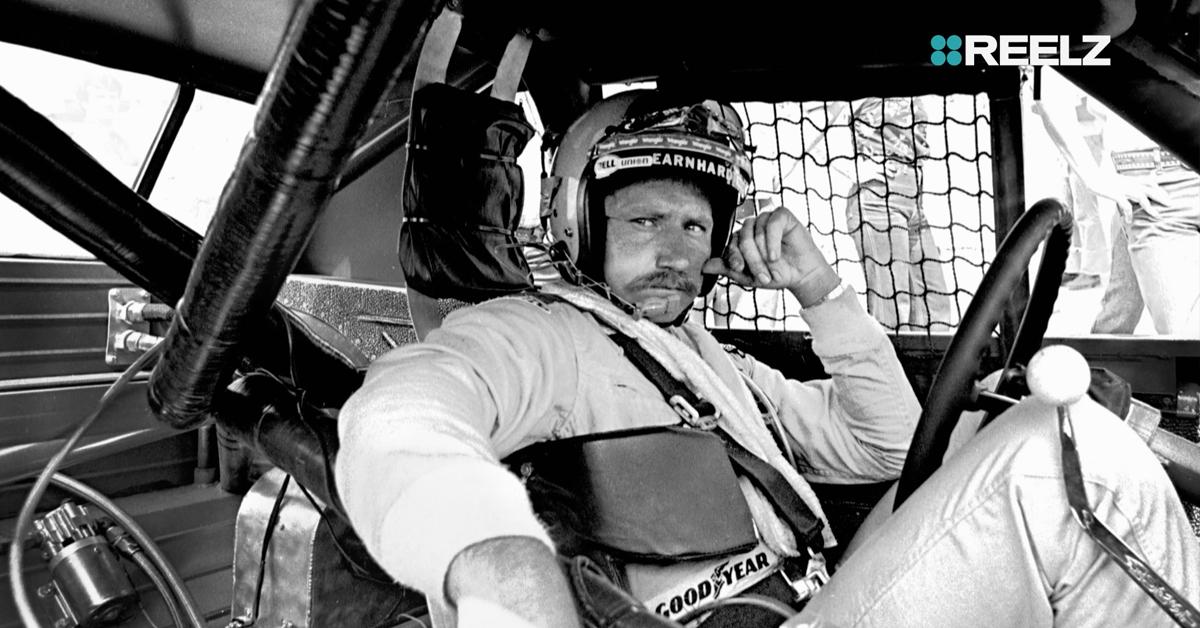What Really Happened During Dale Earnhardt's Final Lap? New Documentary Explores His Crashing End
Dale Earnhardt, Sr. tempted fate in a multitude of NASCAR races over the years, earning him millions of fans and a plethora of accolades. He survived his share of deadly crashes on the racetrack throughout his life, but in 2001, on the cusp of putting his racing career in park, he was tragically killed on the last lap of the Daytona 500. On April 11, REELZ investigates Earnhardt's final drive in Autopsy: The Last Hours of Dale Earnhardt.
According to the documentary, Earnhardt's survival throughout his career was credited to the unusual way he sat in his seat.

"He just kind of leaned over like that, like he was driving a taxi cab," says Humpy Wheeler, NASCAR Racing Promoter. "Saved his life because had he been sitting in an upright position, that top would have gone right into his head," he proselytizes of the horrific accident in 1996.
Over the span of Earnhardt's 27-year career, he won a record seven world championships with 76 NASCAR Cup Series race wins along the way, including the sport's biggest prize, the Daytona 500, in 1998. His southern charm was yet another reason that fans held him close to their hearts.
Although Earnhardt's survival was remarkable, he didn't escape completely unscathed.
"He broke his sternum and gosh knows what else that I remember because it was such a violent wreck," says Wheeler of the crash. "He probably had a concussion and never talked about it."
Want OK! each day? Sign up here!
The documentary chronicles the fact that Earnhardt returned to racing against doctors' advice and while in incredible pain; he went back to racing the next week, determined not to let the 1996 season go by the wayside.
"Concussion in sport is now much talked about, but during Dale's career, it was both misunderstood and minimized," says Dr. Michael Hunter, a world-renowned Forensic Pathologist.
"During the '80s and the '90s I don't think medical focus was on what the driver was doing as far as head trauma and concussions, things of that nature," says John "JR" Rhodes, Earnhardt's public relations director. "Were they happening? Absolutely."
In 2001, at the age of 49, it seemed that Earnhardt was slowing down and possibly looking to move on. He even had his own team with his son, Dale Jr. However, with only two turns remaining in the big race, his car was involved in a 160 mph collision that forced him head on into a retaining wall.
In Autopsy: The Last Hours of Dale Earnhardt, Hunter explores what really happened that day. Was he affected by a condition or past injury that diminished his ability to drive? Is it possible that his mind was elsewhere as he drove his final lap?
For more on the legendary racer, watch Autopsy: The Last Hours of Dale Earnhardt on Sunday, April 11, at 8 p.m. ET/PT on REELZ.
Watch REELZ on DIRECTV 238, Dish Network 299, Verizon FiOS 692, AT&T U-verse 1799 and in HD on cable systems and streaming services nationwide. Find REELZ on your local cable or satellite provider at www.reelz.com.

